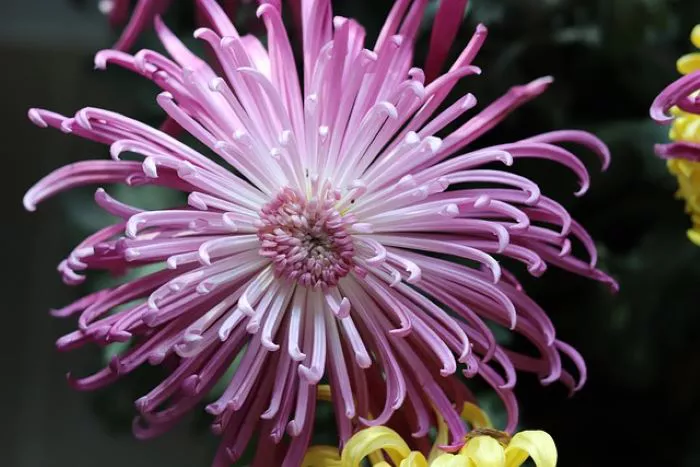Echinacea, commonly known as coneflower, is a group of flowering plants in the daisy family. These plants are native to North America and are well-known for their striking appearance and medicinal properties. Echinacea flowers are often used in herbal remedies, teas, and supplements. Many people wonder if echinacea flowers are safe to eat and how they can be used in culinary applications. This article explores the edibility of echinacea flowers, their potential health benefits, and ways to incorporate them into your diet.
Understanding Echinacea
Echinacea is a genus of flowering plants that includes several species, with Echinacea purpurea, Echinacea angustifolia, and Echinacea pallida being the most common. These plants are characterized by their large, colorful flowers, which typically have a prominent central cone surrounded by petals that can be purple, pink, or white. Echinacea is often grown in gardens for its ornamental value and is also cultivated for its medicinal properties.
Traditionally, echinacea has been used by Native American tribes for various ailments. It is believed to boost the immune system and has been used to treat colds, flu, and infections. The roots, leaves, and flowers of the plant are all used in herbal preparations, but the flowers are particularly popular for their vibrant color and potential health benefits.
Edibility of Echinacea Flowers
Echinacea flowers are indeed edible and can be consumed in various forms. The petals, in particular, are safe to eat and can add a unique flavor and color to dishes. They have a slightly sweet and earthy taste, making them a delightful addition to salads, teas, and other culinary creations.
When consuming echinacea flowers, it is essential to ensure that they are grown without the use of pesticides or chemicals. Wildcrafted or organically grown echinacea is the best choice for culinary use. Always wash the flowers thoroughly before consumption to remove any dirt or insects.
Health Benefits of Echinacea Flowers
Echinacea flowers are not only edible but also offer several potential health benefits. While most research has focused on the roots and leaves, the flowers also contain beneficial compounds. These include flavonoids, phenolic acids, and essential oils, which may contribute to their medicinal properties.
Immune Support: Echinacea is widely recognized for its immune-boosting properties. Consuming the flowers may help enhance the body’s defense mechanisms against infections.
Anti-inflammatory Effects: Echinacea flowers contain compounds that may help reduce inflammation in the body. This can be beneficial for individuals with inflammatory conditions.
Antioxidant Properties: The flowers are rich in antioxidants, which help protect the body from oxidative stress and free radical damage. This can contribute to overall health and well-being.
Culinary Uses: Beyond their health benefits, echinacea flowers can add a unique flavor and visual appeal to various dishes. They can be used in salads, as a garnish for soups, or infused in teas.
How to Use Echinacea Flowers in Cooking
There are several creative ways to incorporate echinacea flowers into your meals. Here are some ideas:
Salads: Add fresh echinacea petals to salads for a pop of color and a hint of sweetness. They pair well with mixed greens, fruits, and nuts.
Teas: Echinacea flowers can be steeped in hot water to make a fragrant herbal tea. Combine the flowers with other herbs such as mint or chamomile for added flavor.
Garnishes: Use echinacea flowers as a garnish for soups, stews, or main dishes. Their vibrant color can enhance the presentation of your meal.
Infused Oils or Vinegars: Echinacea flowers can be used to infuse oils or vinegars, adding a unique flavor to dressings and marinades.
Jams and Jellies: Echinacea flowers can be used in making jams or jellies, providing a floral note to your spreads.
Precautions When Consuming Echinacea Flowers
While echinacea flowers are generally safe to eat, some precautions should be taken. Individuals who are allergic to plants in the Asteraceae family, which includes daisies, marigolds, and ragweed, may also be allergic to echinacea. It is advisable to start with a small amount to see how your body reacts.
Pregnant or breastfeeding women should consult a healthcare professional before consuming echinacea products. Additionally, individuals taking medications or those with underlying health conditions should seek medical advice before incorporating echinacea into their diet.
Conclusion
Echinacea flowers are not only beautiful additions to gardens but also edible and potentially beneficial for health. They can enhance various dishes with their unique flavor and vibrant color. Incorporating echinacea flowers into your diet can provide immune support and antioxidant benefits. However, it is essential to ensure that the flowers are sourced from organic or pesticide-free environments. By following the guidelines outlined in this article, you can safely enjoy the culinary delights of echinacea flowers while reaping their potential health benefits.


